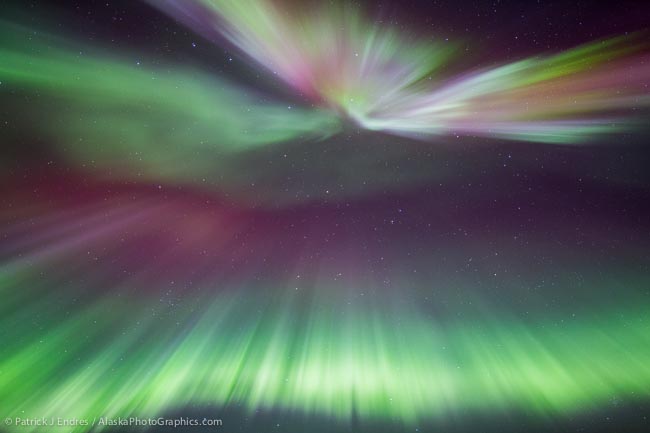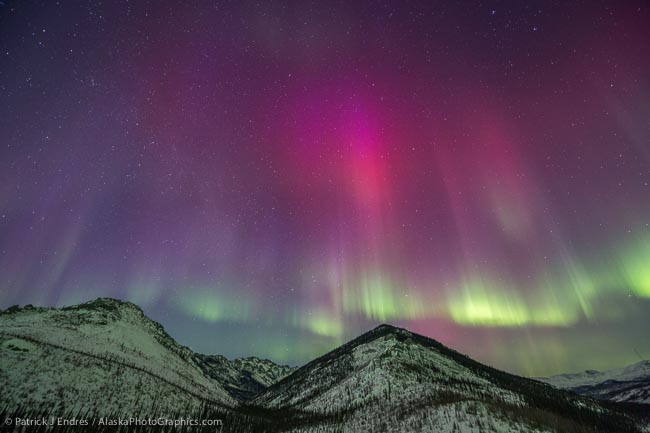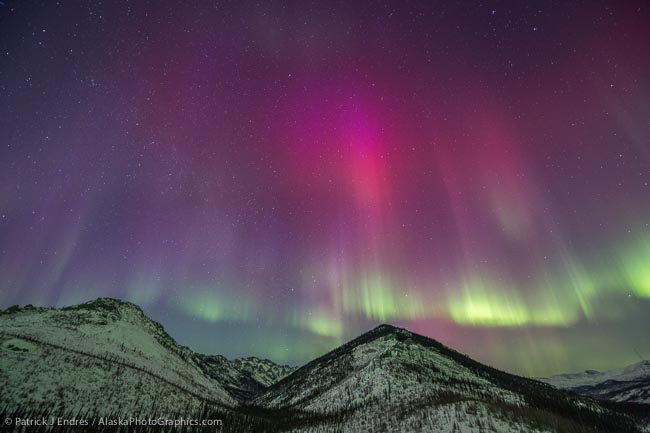
Colorful aurora corona, interior, Alaska. Canon 5D Mark III, 14-24mm f/2.8 Nikkor, 5 sec. @ f/2.8, ISO 1600. Taken at 1:41 a.m. on 3/18/2013
The colors revealed in aurora borealis photography are often not what the human eye observes. The camera sensor’s sensitivity in conjunction with the data collected over a mulit-second exposure result in some stunning and colorful aurora displays should the solar output be strong enough. In my recently published eBook on How to Photograph the Northern Lights, Neal Brown, the director of Alaska Science Explained writes a brief description of the aurora colors:
THE AURORA COLORS
The colors of the aurora change depending on which sun storm electrons and protons collide with which atoms and molecules in the earth’s atmosphere. The green light and the deep, broad red color that often occur high in aurora appear when electrons collide with atoms of oxygen. The bluish-tinged vertical rays in the aurora appear when electrons impact singly ionized molecules of nitrogen. The brighter lower borders of some aurora appear when electrons impact molecules of nitrogen and oxygen, and may briefly appear magenta in color. A faint broad band of blue that runs from magnetic east to west, and just south of the greenish aurora, appears when protons impact hydrogen atoms in the earth’s high upper atmosphere.
The night of March 17, 2013 unveiled a great aurora show with a KP index of 6, which is high solar activity, meaning the aurora oval was extended to far southern latitudes. Along with that, came a lot of colors in the aurora filled sky.

Magenta and red aurora over the White Mountains National Recreation Area, interior, Alaska. Canon 5D Mark III, Zeiss 21mm f/2.8, 13 sec @ f/2.8, ISO 1600. No vibrance or saturation added to this photo!







